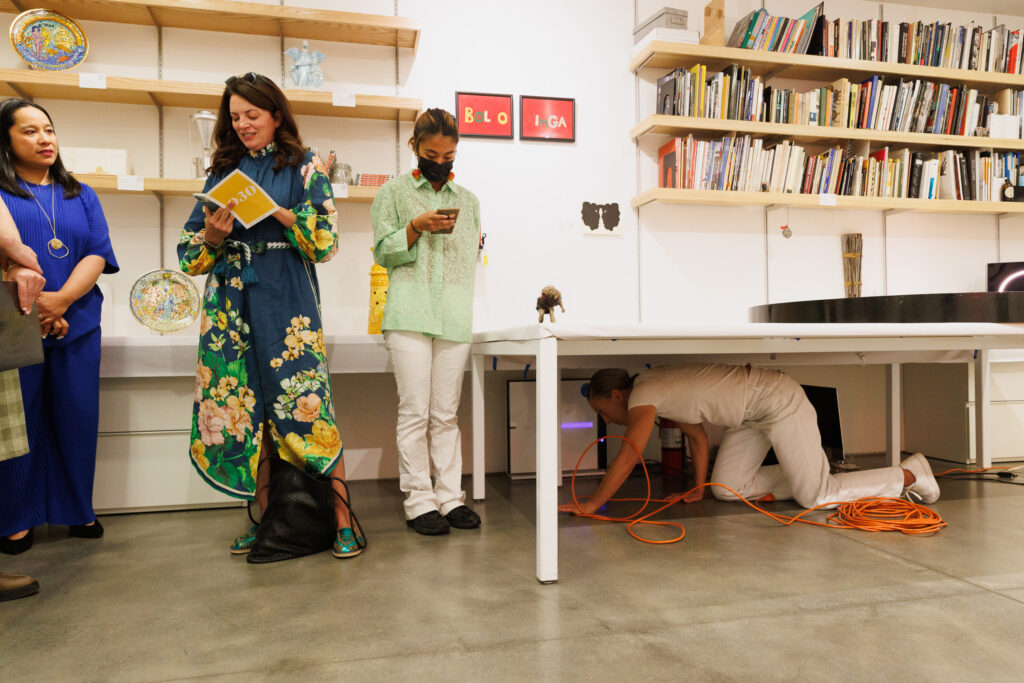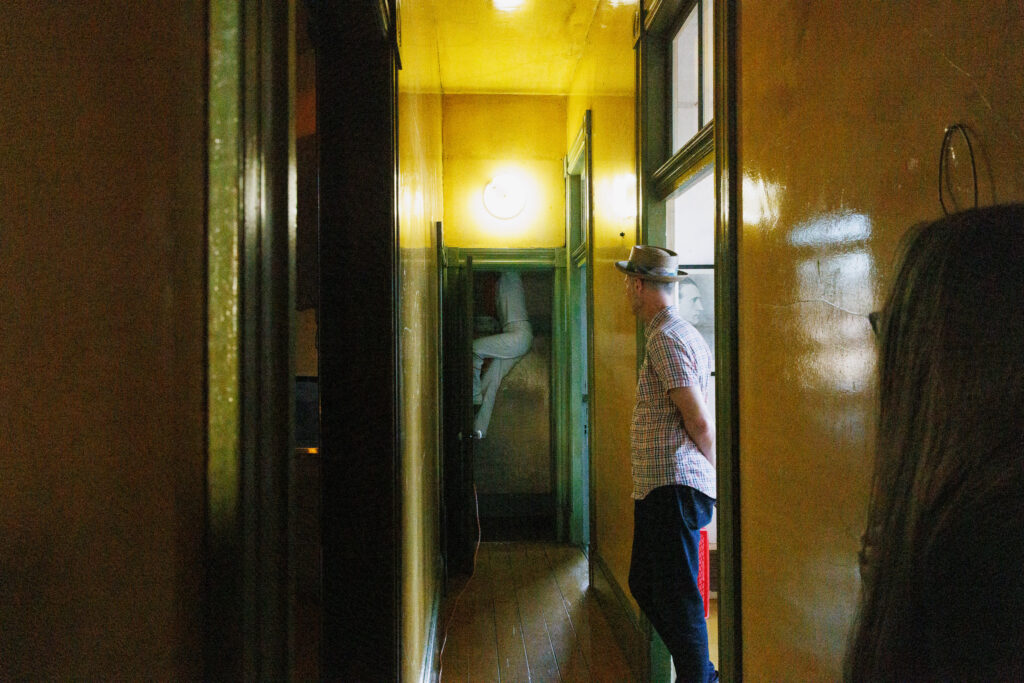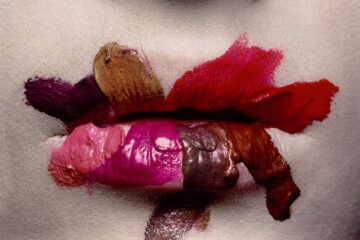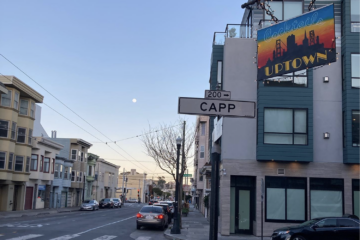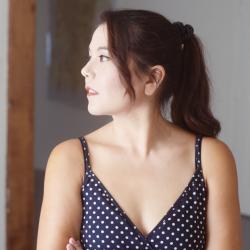Jennifer Locke’s Unconventional Journey Into Performance Art & Beyond
Imagine an art opening where people are holding wine and chatting. Suddenly, a figure dressed head to toe in white interrupts the crowd who move to the side to let her through. She is sweating and her face is red. Her teeth are gritted as she pushes and pulls a nylon sack across the floor. A human arm extends disturbingly from the back of the sack letting the shocked viewers know that there is a person inside it. The arm is holding a single piece of chalk that draws the path the woman in white takes through the space. This is the artist Jennifer Locke and if you don’t know her work, you definitely should.
Locke works in performance, video, installation and still imagery. Within these mediums she creates physically strenuous, sculptural actions in relation to the camera, audience and architecture. The actions she takes focus on duration, physicality and draw on her experiences as a dominatrix, wrestler and artist’s model. Most of the performances are best experienced live where you as the audience member cannot help but be drawn in/discomfited by the extreme physical limits that Locke will go to in each piece. The work is meticulously thought out, witty and always interesting. Recently I caught up with her when she did a piece at the 500 Capp Street Fundraising gala and she answered questions about her lifetime dedication to art the creation of it.
What mediums do you use?
I make performance-based video, still images, and live actions in which sound and site-specific architectural space are important, considered elements.
How long have you been doing art?
I’ve been making art my whole life in one way or another, but things really clicked into position artistically when I started working in performance and video, thanks to a class I took as a young student with Tony Labat in 1990.
Where did you go to art school? What brought you to San Francisco?
I moved to San Francisco from Los Angeles in 1987 to attend the San Francisco Art Institute, which was a life-changing experience! I fell in love with the school right away, got both my BFA and MFA there (with a decade in between), then had the privilege of teaching in the New Genres department for 13 years.

From the piece “Drag” at Minnesota Street Projects. After the chalk line was drawn Locke took the same path and erased it.
What conceptual themes do you focus on in your practice?
I’m very interested in embodied viewership dynamics. Much of my work focuses on the body and how the audience experiences distress in two ways: 1) vicariously through observing another body enact a physically difficult task; and/or 2) internally and personally through disruption of their desire to easily observe said task. In a sense, the body operates as a lure for me to perform structural operations on audience perception by playing with distance, pushing and pulling on spectatorship. This may include barriers to separate the action from the audience’s direct view, such as walls, glass, mirrors, and video projections—and/or conversely, technological mediations to bring the action closer by transmitting live feeds from mini-cameras attached to the body or by amplifying the sound of breathing with a wireless microphone.
Your performances often use endurance and are unique to each space. Take us through the process of creating your pieces.
This varies wildly. It can start with a nagging obsession with a material (Elmer’s glue, stage blood, power cords), an image or task that pops into my mind (a deleted figure disappearing into a deleted space, a figure being dragged), the architecture of the site bringing an idea for an action (a glassed-in storefront window, a multilevel ramp). Then I problem solve, shaping the initial impetus into a full, formally rigorous piece while heavily considering how the audience views it. This has sometimes involved the viewer only seeing the piece as a live video feed, looking through a peephole, or bringing audience members into the piece one at a time.
Tell us about the book you are currently working on?
The incredible visual artist and writer D-L Alvarez and I are writing a two-person memoir—each from our own first-person perspective—about living and supporting ourselves as young artists in mid-nineties AIDS epidemic-era San Francisco. It was during this time that I began training as a Dominatrix at a BDSM house, passing what I learned on to D-L who worked independently as a male Dom. We each lived across from the Valencia Gardens housing project in the Mission, just a block away from each other, and around the corner from Kiki Gallery and Red Dora’s Bearded Lady cafe. Though AIDS loomed large, it was a lively, fertile time … and rent was cheap!
What are you working on now?
In addition to the book, I’m developing a series of still images, a performance in Los Angeles for early 2024, and a workshop for the Spring. I’ll post updates to my Instagram feed @msjenniferlocke, so stay tuned.
Find her online here:

Howdy! My name is Katy Atchison and I'm an Associate Editor for Broke-Ass Stuart.
I want to take the time to say thank you for supporting independent news media by reading BrokeAssstuart.com. Supporting independent news sources like Broke-Ass Stuart is vital to supporting our community because it amplifies the voices of a wide variety of diverse opinions. You also help support small businesses and local artists by sharing stories from Broke-Ass Stuart.
Because you're one of our supporters, I wanted to send over a pro-tip.
Our bi-weekly newsletter is a great way to get round ups of Broke-Ass Stuart stories, learn about new businesses in The Bay Area, find out about fun local events and be first in line for giveaways.
If you’d like to get our newsletter, signup right here, it takes 5 seconds.





